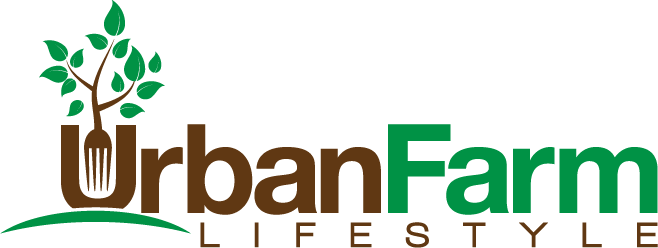Healthy Regenerative Lifestyle
Successful Farmer
The four things to being successful in farming is keep cost down, sell retail, add value to your product, and know your numbers.
David Proctor
From Seed To Fork, Egg To Plate.
We may not live on a farm, but we can grow where we live.
Successful Farmer
by David Proctor
August 3, 2017
Urban Farm Lifestyle Magazine Published Weekly
After attending an amazing PID (Polyface Intensive Discovery) seminar, hosted by Joel Salatin and crew, I am still trying to digest the material in my mind.
I expected maybe ten to fifteen people to be at the seminar, but instead we had thirty-five. People came from all over the country and one from Germany. It was a great time to be around so much information and so much energy.
Everyone had a purpose and a dream. All were hoping to find that bit of information and experience to take back with them to achieve their dreams.

Breakfast
One might think, how much is there to know when it comes to raising a few farm animals? I can tell you, a lot. We went from 7:00am to just about 9:00pm for two days, with barley time to even go to the bathroom during the day.
It rained, but no one really cared, plus the rain was very much needed.
Day, one started with:
Breakfast
- Poultry Processing
- Slaughter technique
- Government inspection issues
- Chilling and handling logistics
- Rabbit Processing
- Slaughter technique
- Regulations
- Composting waste / offal
- Pastured Broilers
- Field logistics
- Shelter design
- Demonstration on moving the shelter
- Predators
- Forage preparation
- Stacking holons on the land base
- Mobile, Modular, Management-intensive
- Duck eggs
- Economics
- Logistics
- The Farmer Built Home
- Brooder
- Deep bedding
- Infrastructure
- Portable option
Lunch
- Rental Farm tour
- Subcontractors and scaling up
- Fiefdoms
- Eggmobile pairs
- Function—pasture sanitation
- Training
- Moving logistics
- Design
- Water / feed
- Efficiency, economies of scale
- Stacking and symbiosis
- Fencing layout
- Water
- Herd moving logistics
- Mob stocking herbivorous solar conversion lignified carbon sequestration fertilization
- Cow-days per acre
- Maintaining forage inventory
- Grazing plan
- Moving, Mobbing, & Mowing
- Pastured pigs
- Rabbits: Raken (Rabbit / Chicken) House
- Stacking
- Production how-to
- Breeding
- Record keeping
- Economics
- Harepen
- Logistics
- Health
- Design
- Hoophouses and horticulture
- Multi-purpose
- Design
- Garden
- Fruit
- Landscape
- Irrigation
- Solarium
- Starting Sets
- Season extension
- Economics
- Logistics to keep rolling inventory
- Recordkeeping
- Tools of the trade, recommendations
- Broiler cut-up
- Sharpening knives, demonstration
- Ragged edge / technique
- Stones / abrasives
- Parts and pieces
- Technique
- Economics
- Sharpening knives, demonstration
Supper
- Relationship Marketing
- Interacting with chefs
- Delivery
- Upside / Downside
- Commission based sales
- Metropolitan Buying Clubs
- Logistics
- Zen Cart
- Promotion
- Delivery
Sleep, end of day one. See what I mean, learning via firehose of knowledge being pointed at you. On top of that it was raining most of the day.
Now we go to day two.
Breakfast
- Hay wagon ride up the mountain
- Pig Pastures
- Disturbance / succession
- Design
- Moving and loading
- Infrastructure
- Economics
- Pigs in Glens
- Infrastructure
- Economics
- Pond building
- Water systems
- Low volume / high storage
- High volume / low storage
- 16” best water
- Road Building
- Water bars / broad based dips
- Guttering 1:100 fall
- Silviculture
- Thinning / weeding of timber stand improvement
- Healthy / unhealthy trees
- Lingo
- Crown
- Dominant / Co-dominant
- Site index
- Aspect-slope
- Diameter at Breast Height (DBH)
- Basal area
- Thinning (2XDBH in feet)
- Light
- Succession and regeneration (low stumps)
- Felling Demonstration
- Notch
- Hinge
- Beveling the stump
- Forest / grassland conversion
- Succession
- Epicormic sprouting
- Pig Pastures
- Pasture cropping
- Irrigation, K-Line
Lunch
- Bandsaw mill
- Milling lumber – demonstration
- Custom milling
- Economics and labor
- Chipper demonstration
- Hay sheds
- Carbon cycles
- Carbon acquisition
- Sources
- Types
- Volume – C:N ratios
- Pigaerator composting
- Multiple – use infrastructure
- Construction
- Deep bedding
- Square bales vs. round bales vs. big squares
- Micro-climates
- Light
- Drainage
- Salad Bar Beef
- Questions from previous rental farm visit
- Scale and economics
- Receiving calves
- Stockpiling
- Grass finishing – the variables
- Genetics
- Brix, humus
- Mineral
- Comfort / stress
- Gain rate
- Disposition (gentile or wild)
- Maturity (3/4ths mother’s weight)
- Exterior bloom, slick haircoat
- Cooking
- Working cattle chute
- Turn to the right
- Go out where they came in
- Toward light but not direct sun
- Pastured Turkeys
- Gobbledygo
- Production logistics
- Brooding
- Exposure to grass / fencing
- Training to feathernet
- Millenium Feathernet
- Rationale for the pastured egg
- Information-dense infrastructure
- Design
- Economics
- Demonstration, move paddock
- Hair sheep
- Logistics
- Goals
- Nuts and bolts of an Intern Program
- Why have interns
- Choosing interns
- Logistics
- Housing
- Managing
- Leverage
- Beekeeping
- Hive logistics
- Honey extraction
- Time / income
Supper
Wrap-up and adjourn. Wow, what more can you cram into two days about farming? This has been an article just listing out what was gone over and adding some pictures.
 Evening
Evening
I will breakout some of these topics in future articles. As you can see, the knowledge that was presented would help an urban farmer and the rural farmer. To top it off, many of the participants asked questions that led into more than what was listed. I was fortunate to be around a very intelligent and motivated group.
This group, in my mind, represents the future in our agriculture. It makes me feel good knowing that farming, whether urban or rural, is going through a change, away from industrial, get big or get out, to a type of farmer that is in touch with the plants and animals being raised. A farmer that cares for the animals in a humane way and leaves the earth better off by the practices used.
Check It Out!

GROUP PICTURE
Quick Tip
BE PERSISTENT
Bibliography: N/A
What Did You Think?




Recent Comments